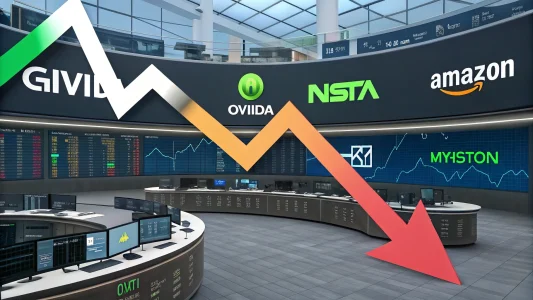Building public trust is essential for brands to cut through the noise, and storytelling is one of the most effective ways to do so. We live in an innovation age, and innovation leads to entrepreneurship, with millions of businesses launching each year in the U.S. alone. As a result, the current small business boom is unprecedented. The majority of these startups are tech-related, which has created a glutted landscape of digital clutter.
Whereas a decade ago, all a new company needed to get a business off the ground was cutting-edge technology; that is no longer an edge that guarantees success. Instead, companies that rise above are not just advancing science. They’re connecting their equations and algorithms to real, tangible human impact.
To put it another way, the tech brands that are succeeding are doing so by creating a viable product or service and then telling the world about it through a story people can understand.
It doesn’t matter if your goal is attracting private investors or earning public trust. The ability to effectively communicate how your innovations improve real lives is what turns potential into momentum in the modern marketplace.
Clear, relatable storytelling is vital across business activity — from securing investor support to attracting top talent and building public trust. Let’s explore why the ability to tell a compelling story is crucial for business success and consider examples of how brands can shape the narrative that surrounds them in ways that accelerate and amplify their impact.
Table of Contents
ToggleThe Public Perspective: Building Trust in an Age of Skepticism
Tech companies often operate behind a wall of jargon. Software features are buried beneath layers of acronyms tossed around casually, while hardware performance is wrapped in technical terms that leave outsiders wondering what, exactly, any of it means.
This technical opacity builds barriers that create discomfort and even distrust in people trying to understand something from the outside looking in. Storytelling becomes the critical tool to prevent this from happening. It enables you to translate internal dialogue and verbiage into understandable narratives that communicate applicability and value in everyday life.
Building Trust Through Clarity
The ability to take technical terms and convert them into stories infused with a touch of the human brings technology into sharp focus. It sparks hope, stirs emotion, and invites the audience to understand that the tech is aiming to join their journey. This type of corporate storytelling reveals why high-tech and big data matter and illustrates their impact on individual lives. By making those direct connections between innovations and the needs of its audience, this approach cultivates trust in the brand and forges meaningful links between the company’s activity and those it serves.
Neurotech startup Paradromics is pushing the boundaries of brain-computer interface (BCI) technology, emerging as a serious challenger to Neuralink in a field often clouded by technical complexity. In May 2025, the company reached a defining milestone: the successful implantation of its BCI system in a human patient. This breakthrough was the result of rigorous research and deep collaboration with the University of Michigan.
But Paradromics understood that the moment’s power didn’t lie in the science alone—it depended on how that science was shared. The company replaced dense jargon with clear, human-centered messaging designed to resonate with patients, families, clinicians, investors, and the broader public. Its messaging focused on what truly mattered: restoring the ability to communicate for people living with conditions like ALS, stroke, and spinal cord injuries, and opening new possibilities for treating neurological and mental health disorders.
By translating technical achievement into a clear, emotionally grounded story, Paradromics did more than inform—it inspired. The company turned a complex innovation into a deeply relatable mission, positioning itself not just as a BCI pioneer but as a force for real, measurable impact in people’s lives.
The Investor Perspective: Why Narrative Drives Capital
When investors consider opportunities, they are often willing to back people and purpose. Yes, they are interested in viable companies and profitable deals. But at the end of the day, for all the data-driven decisions and calculated analysis, investors are people. As humans who crave purpose and connection, investors want to know that money wisely invested in a growth opportunity will also solve a critical problem and improve our world.
This kind of behavior is apparent in the way capital flows out of good narrative storytelling when combined with a compelling plan for commercialization. In the Paradromics example above, the startup had success accessing capital. (It had raised $100 million according to Pitchbook before its successful trial had even been completed.) There are other examples.
Impacting Capital With a Confident Narrative
Anduril is another demonstration of how a confident narrative can drive investor influence. The AI defense brand took a unique and risky storytelling approach to marketing its software. This ditched industry jargon for strong storytelling that sought to evoke emotion and connection.
“Risky” is the right term here, too. The company was willing to roll the dice on alienating certain groups to go all in on a story that catered to the audience they wanted to reach. Their Rebooting the Arsenal essay provided a punchy corporate storytelling manifesto that criticized the failures of the defense-industrial complex and contrasted it against the company’s own solutions.
By cultivating media-worthy story-driven moments, Anduril shaped its own narrative. It showcased its value to investors, confidently steering them toward why it could provide value. The result? $2.5 billion in funds raised and a $30.5 billion valuation as of mid-2025.
The takeaway here? Investing isn’t a jargon-driven world either. Sure, the investing in Anduril and Paradromics was done with the understanding that their bold storytelling would quite literally pay off, but it doesn’t water down the deeper lesson.
Story drives results, and investors are aware of that. When companies steer into tangible, relatable narratives to communicate their value, they build trust with outward-facing publics, including those with big bank accounts.
The Talent Perspective: Storytelling Creates a Culture Magnet
Investors may provide the sinews of business, but it is employees, contractors, and team members who move the mission forward. That sense of “mission” is critical, and it is once again created and fed by good storytelling.
When a talented individual is looking for work, they are going to consider obvious things, like compensation and benefits. However, candidates also care about what they are participating in. This is a conviction that is intensifying with younger generations, too.
For example, SHRM data reports that nearly three out of every four Generation Z workers (74%) rank “purpose at work” as more important than their paychecks. They want to know that they are part of something bigger than themselves, something that they can believe in. The HR organization adds that half of Gen Zers have even rejected assignments at work based on personal beliefs and ethical stances.
This makes workplace culture not just helpful. It has become critical. In fact, Gen Z employees who consider their workplaces “good or excellent” are a shocking 790% more likely to feel satisfied in their work, and workplace satisfaction is a key catalyst for high retention rates and greater profitability.
Attracting Talent Through Storytelling
How can companies attract and retain ethics-driven workers? Through storytelling. Rather than sticking to facts, brands that manage to translate their results into story-driven narratives are more likely to attract top talent. The facts and data should still be present, but they must be presented in relatable ways.
Patagonia is an example of a company that does this well. The clothing brand is famous for its ability to put causes and missions at the center of its storytelling. Its commitment to nature, sustainability, and inclusivity has defined a generation of business.
Recursion Pharmaceuticals is a more tech-focused version of this concept in action. The TechBio and AI firm is in its clinical stage. It is also passionately devoted to human-centric language, storytelling, and impact.
Right on its recruitment page, the site cuts to the chase. Rather than citing high compensation or impressive funding or even technological prowess, it says, “We’re working to solve some of the most meaningful problems facing human health today. Come do the most impactful work of your career at a company that prioritizes belonging, collaboration, and career development.”
The way a company positions its investment and focus can have a major impact on who it attracts. Adding a story-driven element to the information only enhances that attraction and leads to even better talent acquisition over time.
Using Storytelling to Unleash Momentum
Bold marketing is the new normal. From fintech to defense, AI to analytics, the ability to market tech companies through strong narratives and storytelling is becoming a differentiating factor that leaders cannot overlook.
You can invest in technology all day long. But those nuts and bolts of your organization won’t make the plane fly. If you want to lift off, you have to find ways to talk about your unique selling propositions in relatable ways that resonate with the right audience. Find ways to use your data to differentiate yourself through relatable and applicable stories.
Investors, employees, and everyone else who matters need to hear why your brand is a difference maker. They need you to translate scientific findings and mathematical concepts into terms that convey hope, ethics, and opportunities. When companies skip the jargon and share real-world stakes, they stand out not just for what they do, but why it matters — and that’s where the magic happens.
Featured Image Credit: Photo by Fauxels; Pexels; Thanks!
















